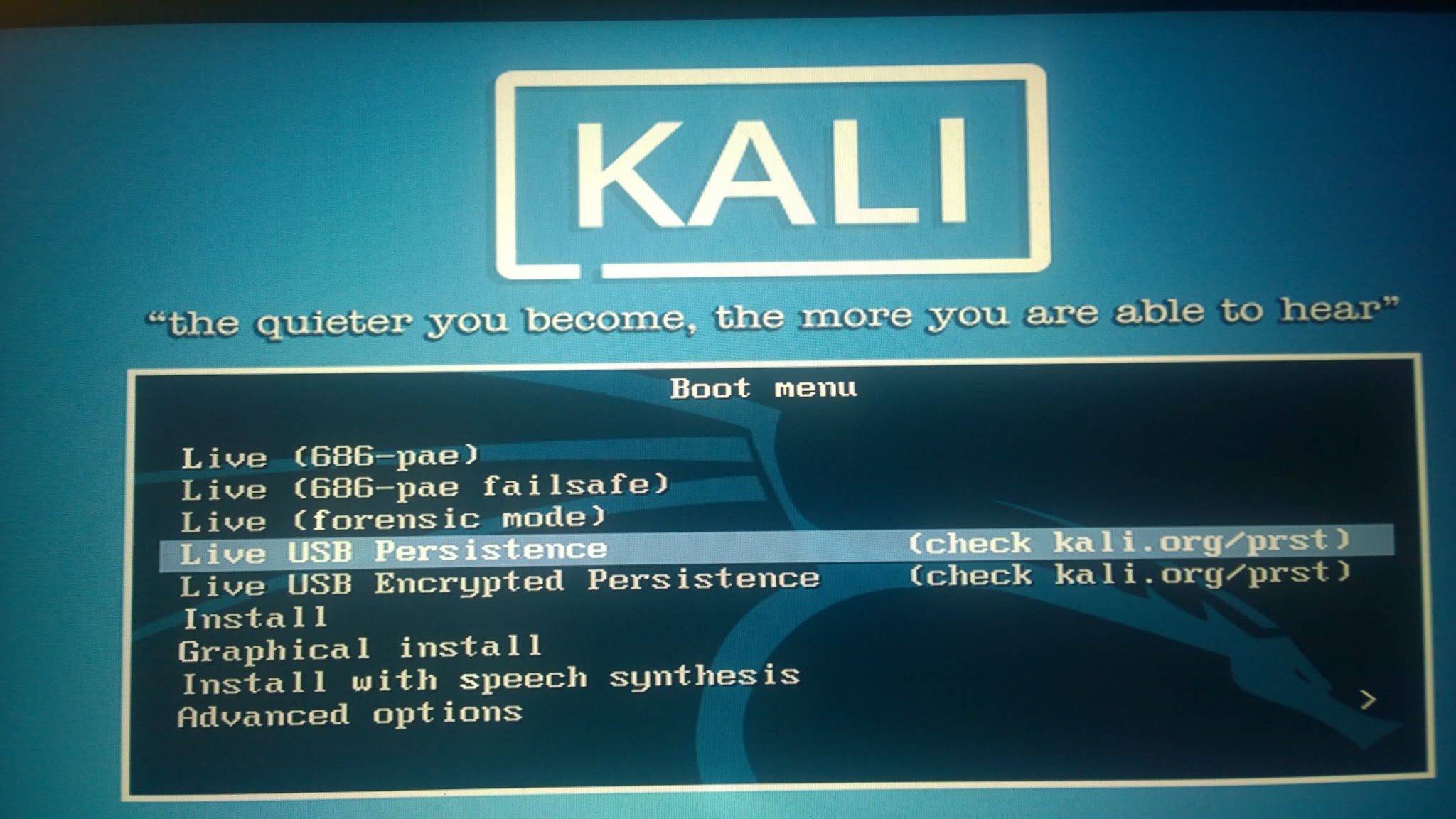


If you want to uninstall a package then, To uninstall a package from your Kali Linux Live Persistent USB, you can follow these steps: 1>Open a terminal on your Kali Linux Live Persistent USB.

Therefore, it's recommended to only install the packages that you really need. It's important to note that since Kali Linux Live Persistent USB is designed to be used as a portable operating system, installing too many packages or making too many changes to the persistent partition can cause the USB drive to become unstable or run out of space. 2>Update the package lists by running the command: sudo apt-get update 3>Install the package you want by running the command: sudo apt-get install 4>Once the installation is complete, the package will be installed in the persistent partition of the USB drive, and it will be available the next time you boot up Kali Linux Live Persistent USB. To install packages on a Kali Linux Live Persistent USB, you need to follow these steps: 1>Boot up Kali Linux Live Persistent USB and open a terminal. When using a Kali Linux Live Persistent USB, any changes you make are saved to the persistent partition on the USB drive, rather than the actual computer's hard drive. However, the process is slightly different than installing packages on a regular Kali Linux installation. :~$ echo "/ union" | sudo tee /mnt/my_usb/persistence.Yes, it is possible to install packages on a Kali Linux Live Persistent USB. :~$ sudo mkfs.ext4 -L persistence $3 /mnt/my_usb Next, create an ext4 file system in the partition and label it persistence:.When fdisk completes, the new partition should have been created at /dev/sdb3 again, this can be verified with the command lsblk. We have to do this from the command line as gparted will read the imaged ISO as a large block: This can be verified with the command lsblk.Ĭreate and format an additional partition on the USB drive.įirst, let’s create the new partition in the empty space above our Kali Live partitions. We’re going to assume that the two partitions created by the imaging are /dev/sdb1 and /dev/sdb2. In this example, we’ll create a new partition to store our persistent data into, starting right above the second Kali Live partition, put an ext4 file system onto it, and create a nf file on the new partition.įirst, begin by imaging the latest Kali Linux ISO (currently 2023.1) to your USB drive as described in this article.



 0 kommentar(er)
0 kommentar(er)
